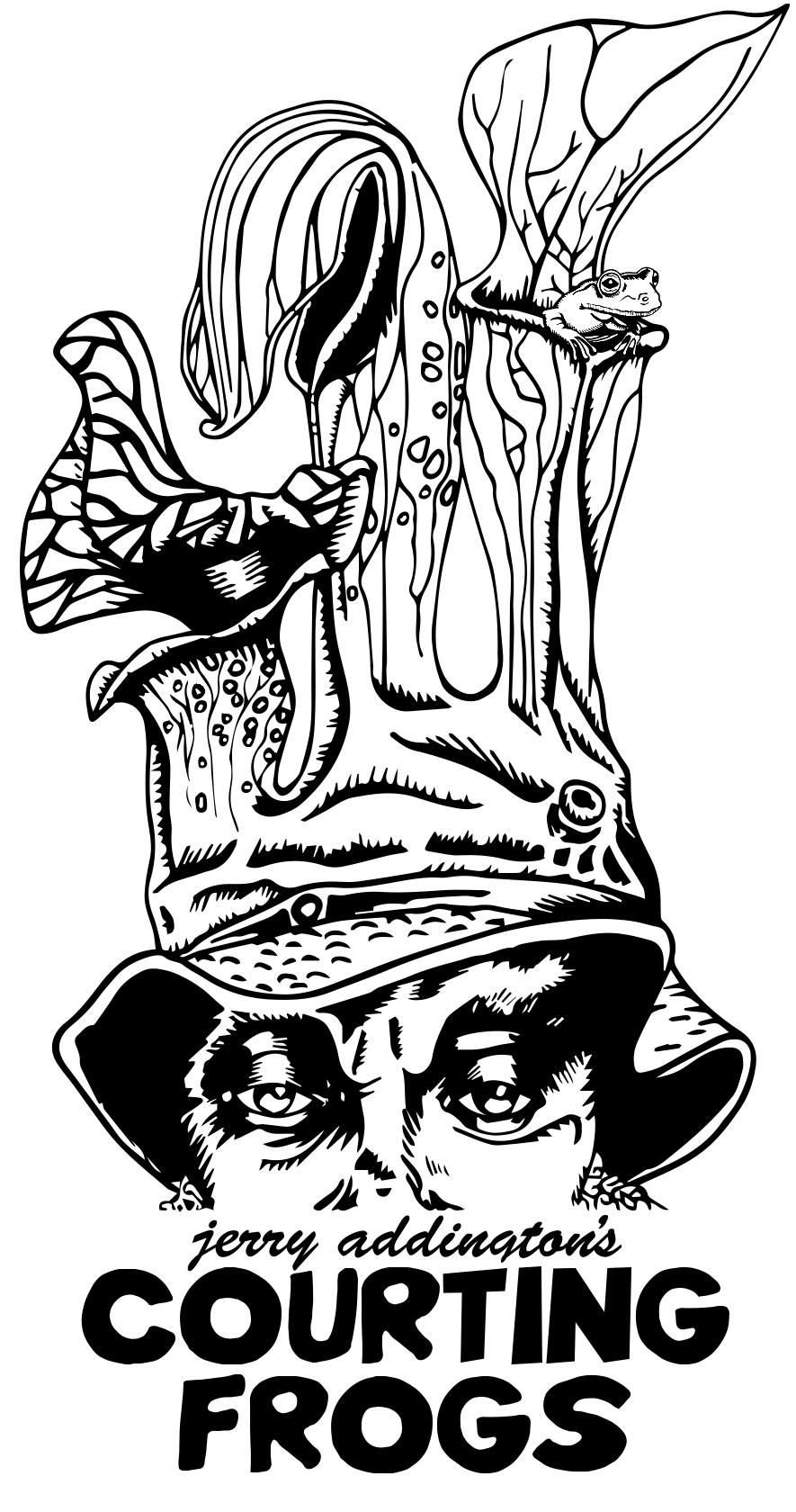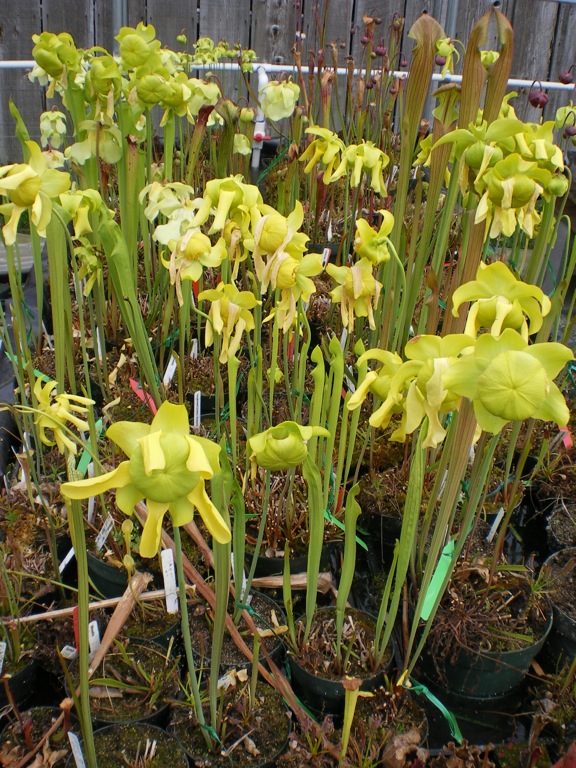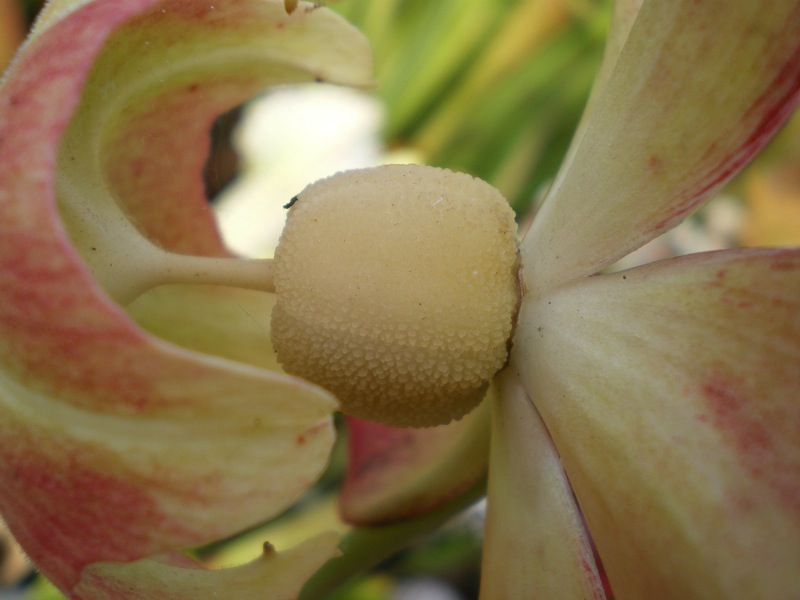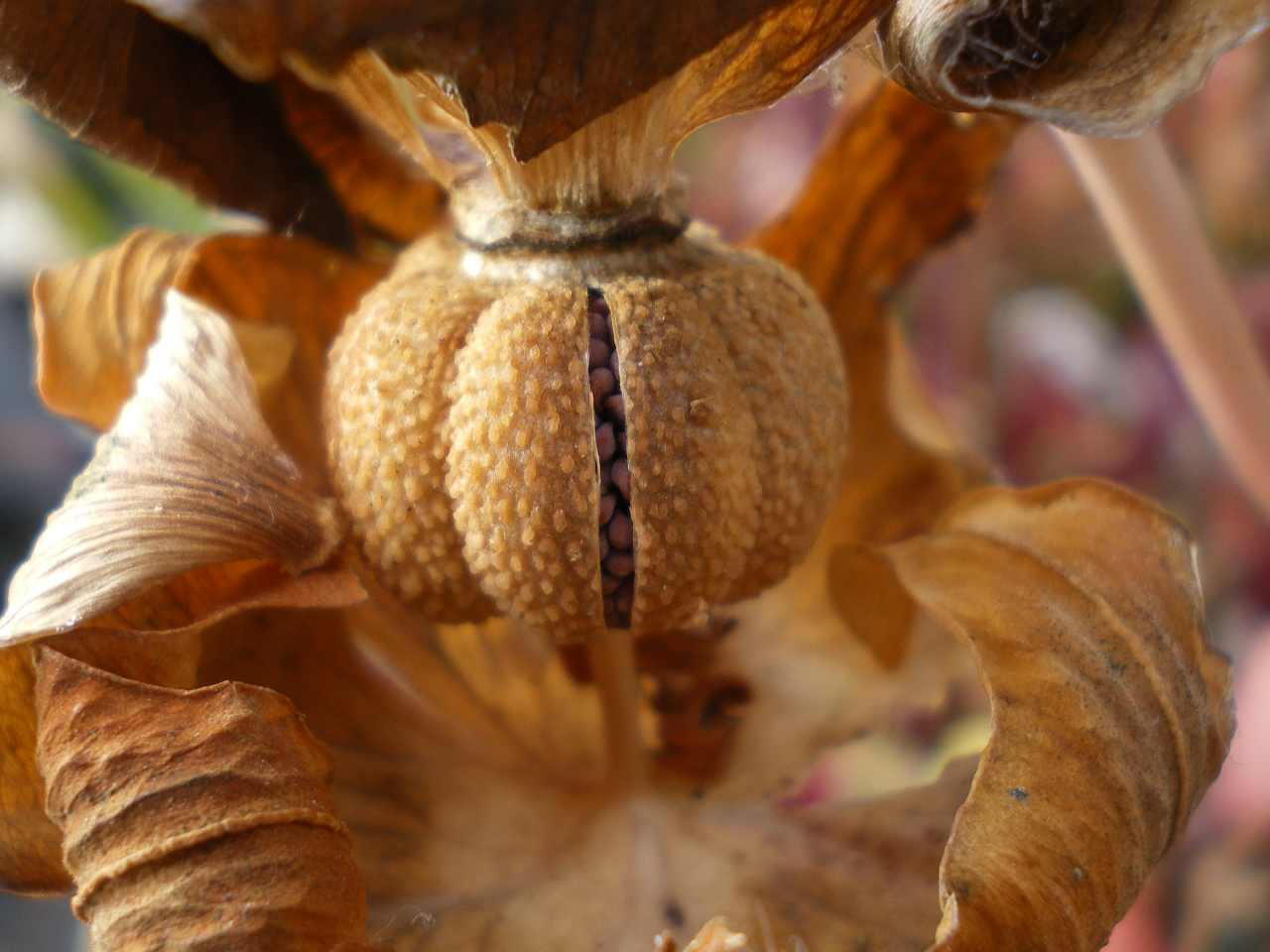Jerry's Passion:
It started innocently enough, like many affairs of the heart. I had no idea in the beginning that I would soon be sliding down a slippery slope of desire to hopeless obsession.
It was just a couple of plants my wife had acquired previous to our courtship – a nice Sarracenia purpurea purpurea clone purchased at a local plant sale and a mail-order “catesbaei” of remarkable beauty. I already had a small wholesale operation going with cacti & succulents and, sensing an additional minor opportunity of commerce, had ordered a trial wholesale quantity of Dionaea. When these sold, I reordered and, influenced by Elaine’s two Sarracenias, ordered some of this genus also.
If I had just contented myself with establishing and selling them, I may have retained a semblance of balance and stature as an only slightly addled horticulturist suspended in limbo between advanced hobbyist and struggling nurseryman – but it was not to be.
Love can arrive suddenly in a sickening lurch. Thus it was with my still smoldering affair with succulents – a breath-catching rush of instant infatuation. Here, I fell hard and fast, acquired quickly and giddily, built ever-larger greenhouses, and finally, feeling the economic burden strangling my financial resources, turned commercial as a last ditch attempt to explain and sustain my illness.
With Sarracenia, commerce came first and love came by stealth.
I could not bring myself to sell all my first order. The variation in form and color (the same problem I have with succulents!) started to work on my imagination. I kept my favorites with the simple intent of dividing them for future sales, but then they started flowering and I could not let that pass. At first clumsily, then with more assurance, and finally with total abandon, I smeared pollen from flower to flower – from plant to plant until all had shared and reshared in mutual intimacy.
Would I have started down this path had I known its length? Or drifted into this affair had I the measure of its grip? If I had any idea that after three years the damn seedlings would be only 2” high? Doesn’t matter now. I have trod this path so deep its canyon walls channel all my horticultural desires – I have planted so many seeds for so many years that grow slow as they do their cumulative pace outruns me. I have manipulated the genetic resources of this genus to feed my curiosity, creativity, and vanity, and the plants have bled off my time and energy for their sustenance. A dysfunctional relationship, perhaps, but no more so than most – and there is the beauty, the quest, the feverish anticipation that blossoms each spring.
There are 123 powerful currents in this
river of desire
The first is creative and aesthetic – the drive to make something beautiful and new in the world. My particular talents, mostly stubbornness and self-delusion, serve me best in this area of expression. The second is my social drive, the old primate need to distinguish myself in the troop. Here, I would hold up the beautiful thing, wave it high, and harvest the acclaim of the admiring multitude. I must admit in this rarified area of interest a fully gathered multitude might fill three tables at a small restaurant, but this is my game and I will define multitude as it suits me. The last is basely commercial; to support my obsession I must sell plants, well, not all or even most of them of course, but at least an economically viable fraction.
Well, this seems a rather neat and tidy bit of self-analysis but as the river flows this pretty conceit is lost in the twisting entanglement of emotional currents. My moment to moment motivation is complex and confused – whether the business is rational or a rationalization is a valid question but I don’t care – I have to get out to the greenhouse.
Back in the greenhouse, I am faced with more concrete issues. This is where I set my goals and plan my campaigns. Here ambition is translated to progeny. The aesthetic appeal and commercial viability of this progeny will be the measure of my breeding success.
Commercially, I desire attractive plants for all seasons. While the species of Sarracenia are beautiful, and I do not neglect them, they leave huge gaps on the shelf. The ones that are good early, and never quite as early as I would like, also fade early. Species that show best late are so late that all gardening interest has long bled out. Another problem is the lack of variety in evergreen forms. Only psittacina and purpurea qualify as evergreen and both are short and relatively small. Gorgeous tall plants in a variety of color patterns with the previous year’s pitchers still in good shape during spring flowering would greatly expand retail potential. I need these plants. Those who sell by mail are really selling their powers of description and persuasion but my plants have to sit on a bench and sell themselves.
Alone in the genus, S. oreophila pushes spring pitchers early enough so they expand while the flowers are opening. This is another trait useful in hybridizing. Plants with a wide range of forms and colors exhibiting this feature should appeal to the public who otherwise make no connection between flowers and pitchers. I feel I am barely begun here – still dealing with 1st, 2nd, and now 3rd generation crosses. In orchids, hybridizers are a hundred years past that. Other growers have worked and are working this genus to the depth I occupy but there has not been a wide enough level of interest to sustain a continuity of effort whereby each generation can build on the work of its predecessors. Instead, I see the occasional flowering and extinction of eccentric enthusiasm for this gorgeous genus, the possessor of so many horticultural merits. My hope is to see such a swelling of interest in Sarracenia that breeding programs may be transported to a new level of sustained activity, fully exploring the genetic potential of these beautiful plants.
The pervasive influence of fundamental ignorance still informs my work...
Are there genetic linkages of characteristics, say between shortness and evergreen state, that stand between me and my goals? I can’t be sure, but I think not. So far the various characteristics appear to blend rather than being inherited as discreet traits that might be linked to the breeders disadvantage. So far it appears Mendel would have had a hard time discovering genetics by working with Sarracenia. The exception here is the albino phenotype which seems to follow a classic Mendelian pattern of inheritance. Unforeseen problems may arise, hidden reefs of stubborn genetic resistance that dash hope and sink ambition. A happier thought sees the fog of ignorance penetrated by the illumination of insight as subtle patterns of inheritance emerge. I am buoyed by the hope that liberal applications of time and effort will cleave asunder the constellation of traits that comprise each species, allowing their recombination in forms to match my dreams. Like Frankenstein, I will stitch together my hopeful, beautiful monsters. I will write my poems in their genetic code. This isn’t magic and is hardly science. It is mostly just stubbornly bumbling about. The most sophisticated tools I use are the same ones our Neolithic ancestors used to develop our basic food crops – observation, selection, patience and persistence of vision.
I am sure I would make faster progress to specific goals if I controlled my focus better and sharpened my tactics. I make grand schemes in the winter with hybridizing plans aimed at particular ends extending several generations in the future. Once flowering begins, however, I am overwhelmed by possibility, time, limited opportunity, transient enthusiasms, and sheer exhaustion. In the winter my emotional climate tends more to sobriety and depression as I peruse the labels during seed-sowing and wonder what the hell I was thinking when I made these crosses? The saving grace here is that these love children of an in the moment seduction often transcend or at least offer more instruction than the offspring of more rigorously planned pairings. On a practical note in an effort to make faster progress or at least to make more seed, I am arranging my plants in three different climactic zones – low heat greenhouse, unheated greenhouse and outdoor waterbeds. With clones of my best plants in all zones, this should ensure overlapping flowering times for the majority, most years. For one who is so basically unorganized, this is a heroic effort.
So I proceed by fits and starts, a little science, a little art, and a lot of seed. Creation in breeding is always an indirect process, demanding both a partnership and a struggle between the breeder and the genome. The road is long and there must be as much pleasure found in the journey as in the arrival. In truth, the journey never ends, the goals keep shifting, and the treasure, most of it unanticipated, lies scattered all along the road.




